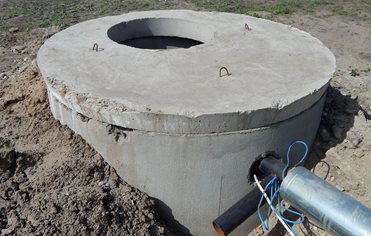Septic Tanks and Cesspools
 Parts of Dover district are very rural and the main sewers do not serve all areas.
Parts of Dover district are very rural and the main sewers do not serve all areas.
Instead septic tanks or cesspools are used.
In older properties these are built using brick and mortar but newly installed systems are generally moulded forms of plastic or fibreglass.
Septic Tanks
Septic tanks are chambers in the ground divided into smaller chambers. The compartments sort solid waste from liquid. The liquid is then allowed to enter the ground via a soakaway. (A soakaway is a pit dug into permeable ground filled with hardcore and usually covered with earth. Surface water or purified effluent from a sewage treatment plant is drained into this and percolates into the surrounding ground). These need to emptied occasionally to remove sludge but not as often as cesspools.
Cesspool
A cesspool is a single chamber in the ground storing sewage and wastewater until full. Once full, a contractor is employed to empty it.
Treatment Plants
Treatment Plants are tanks containing bacteria to breakdown the sewage. Electric pumps run the waste through filters and the treated water is deposited into a soakaway. The tank should not need emptying often but requires maintenance.
Who is Responsible?
The pipework leading to all these systems is usually the responsibility of the properties it serves.
- Problems arising with pipework fall to all the properties affected by the fault sharing responsibility.
- If the tanks become full or defective then all properties are affected and share the responsibility for putting it right.
If a problem arises at Council properties served by septic tanks or cesspools please contact us.
Septic tanks and cesspools must be emptied by a professional contractor.
Make a Report or Enquiry
Should you wish to make a report, complaint or have an enquiry relating to drainage please use the reporting form on the following link:
REPORT